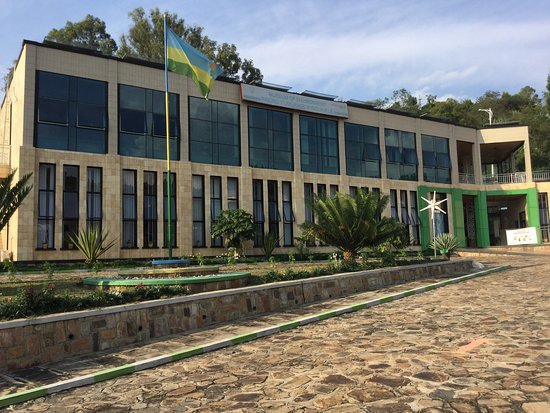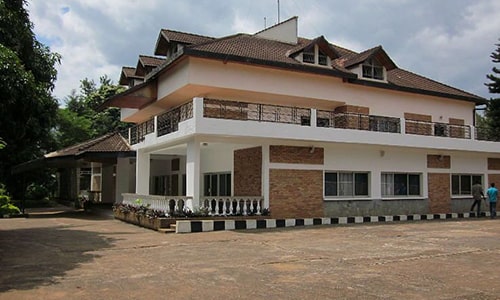Rwanda Museums: Rwanda is deeply devoted to preserving and sharing its history with both residents and foreign visitors, as seen by the government’s dedication to preserving and sponsoring museums. The Rwanda Institute of Museums consists of six museums, with headquarters in the Huye area and locations around the nation available to tourists all year.

Rwanda Museums.
The Ethnographic Museum/ The National Museum of Rwanda
Rwanda’s national museum is located in Huye district, 132 kilometers from Kigali, on the way to Nyungwe forest national park. It is Rwanda’s largest and most well-known museum. More than 10,000 objects from the museum’s anthropological and archaeological collections make it one of the best in East Africa. Maps, pictures, art items, and relics depicting hunting, fishing, basketry, ceramics, textiles, woodcarving, and metallurgy are among the resources included. The museum’s tour guides are informed and kind as they take you around and share this history with you.
You will learn about Rwanda’s pre-colonial history as well as its growth trajectory and cultural history. This is a highly suggested stopover on your route to Nyungwe Forest to not only break up the travel but also to get a taste of Rwanda outside the national parks, animals, and towns.
Kandt House/ Rwanda Museum of Natural History.
The Rwanda Museum of Natural History, commonly known as Kandt House, is located on Nyarugenge Hill in Kigali. It was the old home of Richard Kandt, a German scientist and imperialist who was the first to live in Rwanda because all previous governors ruled from outside the country. The Rwandan government transformed his home into the Museum of Natural History to honor him and his accomplishments, as well as to symbolize the evolution of the earth, animals, and plants, demonstrating their interconnectedness.
The Kandt House, among other places on your agenda, is a must-see during your Kigali city trip. Its central position makes it a great stay for anybody visiting Kigali, regardless of how much time they have.
The King’s Palace Museum in Nyanza.
The Kings Palace Museum is located in Nyanza, 85 kilometers from Kigali. In 1899, King Yuhi V Musinga established Nyanza as the Kingdom’s royal capital. The palaces were destroyed and restored over the years as the Kingdom developed and was abolished.
The royal palace served as the location for kingdom choices and possessed the greatest artistic impressions of building design at the period. Today, on your tour to the palace, you will admire the splendor and learn more about the ruling class’s lifestyle and Rwandan culture, as well as the history and culture of the Rwandan people. The palace has also been rebuilt and is now available to the public.
Rwesero National Art Gallery/Museum.
Rwesero Arts Museum is located in Nyanza district, around 85 kilometers from Kigali. The museum was originally intended to be a house for King Mutara III Rudahingwa, but he died before he could move there. The museum exhibits modern artwork that draws influence from Rwandan traditional and national heritage. Its location on Rwesero hill provides a panoramic view of Nyanza and its surroundings. It is perfectly positioned the route to Nyungwe Forest National Park from Kigali, so consider stopping here for some rich Rwandan history and to purchase some artwork.
Kanombe Presidential Palace Museum.

The presidential palace museum was recently added to Rwanda’s list of museums. It is about 2 kilometers from Kigali International Airport and was home to Rwanda’s previous presidents, Juvenal Habyarimana and his predecessor Pasteur Bizimungu, during their reigns as Rwandan leaders. It houses the wreckage of the presidential plane that was shot down on April 6, 1994, sparking the Rwandan genocide.
You may go through the many chambers and ‘secret’ passageways to get a look of the statehouse. A visit to this museum provides insight into the lives of the two presidents through photographs of prior presidents and presents received from other rulers or nations.
The Rwanda Museum of Environment.
The Rwandan Museum of Environment is located in the Karongi area, near Lake Kivu. This is an ideal site because Lake Kivu is one of Rwanda’s most valuable natural resources. The museum serves as a learning tool for how to coexist with and use natural resources in a sustainable manner. Its mission is to educate the people on how to use the environment without harming it, so that future generations can benefit from it. A visit to this museum will provide you with an overview of climate change in Rwanda and how the people and government are dealing with it.
In summary; Many visitors visit Rwanda each year because of the gorgeous beauty of rain forests and undulating hills, the attractive culture and people, and the diverse wildlife, particularly the endangered Mountain gorillas. Many more prefer the climbing opportunities provided by the Virunga volcanoes, particularly Mount Bisoke and Mount Karisimbi.
These excursions are often organized as Rwanda safaris, which include gorilla trekking safaris, wildlife tours, chimp trekking safaris, hiking possibilities, and cultural tours, particularly in the country’s eastern and northern regions. The most famous activity of them all is gorilla trekking in Volcanoes National Park.


